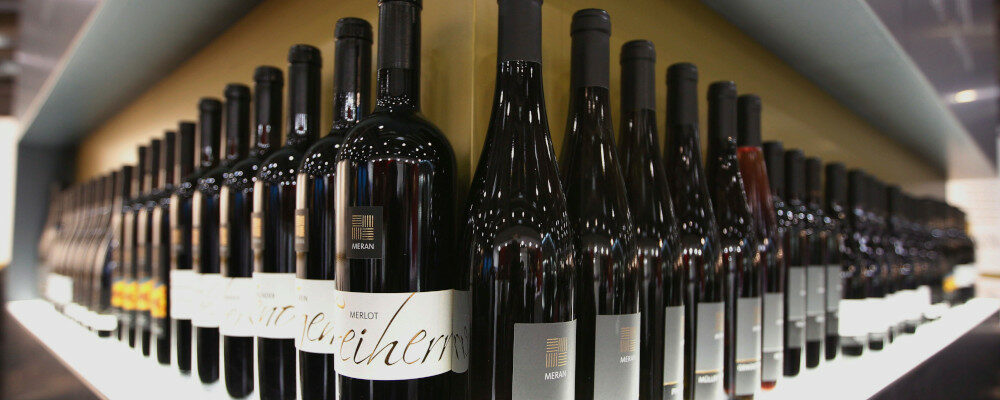I took a flyer on a case of wine this week. I mean that I bought a case of 12 bottles of red wine that I’ve never tasted, by simply clicking through an email offer sent to me by an importer. In Ontario, wine agents can only sell wine directly to consumers in the quantity it was shipped in,1Wine agents in Ontario, represent foreign wineries but are actually agents of the Liquor Control Board, which is the sole importer and warehouser of wine. Since the wine must ship directly from the Crown corporation’s warehouse, they presumably don’t want to do the work of breaking up the cases, and if the agent didn’t that would threaten their monopoly. which is usually cases of 12, sometimes cases of six (if the wine is expensive and meant mostly for restaurants), and only in a single bottle if the bottle is very big.2The exception to this rule, granted during the COVID lockdowns, is mixed cases, but they also must be in the quantity that the wine was shipped in.
It was an educated guess based on three criteria. First, I know the importer and tend to like the producers he works with. I have read that societies with inefficient markets depend more on personal relationships to establish trust in commercial dealings. A good example of an inefficient market might be one where the consumer is obliged to buy 12 bottles of wine to see if he likes it.
The second criterion was the price. The wine was advertised at $20, which after HST and a $20 shipping charge came out at just under $25 a bottle. That’s not cheap, but it’s not so expensive that if the wine really wasn’t what I was looking for, I could still swallow the loss without feeling too bad.
The third criterion was geography. The wine is from the Marche, in the middle of the Adriatic coast of Italy. The Marche is probably best known, to the extent that it is known, for its white wines made with the Verdicchio grape. But the wine I bought is a Rosso Piceno, a red wine made from a blend of Sangiovese and Montepulciano.
I hadn’t tasted that blend, from that place, for a while, so the offer piqued my curiosity and inspired enough hope to enable a commercial transaction. If I am honest I will confess that my gamble was also made in consideration of a fourth criterion: timing.
The idea that there is a season for a particular wine is one of these magic ideas in the trade that is simultaneously true and false. It’s true because if you’re selling a particular wine at a time consumers seem to prefer it, like rosé in the summer, it’s a great marketing pitch.
It’s also false because if you’re selling a particular wine at a time when consumers don’t usually buy it, like rosé in the dead of winter, then iconoclastically proclaiming rosé should be enjoyed in any season might be the only marketing pitch there is. If you Google “rosé wine winter” you’ll find page after page of articles extolling the virtues of pink wine “off-season”. If scroll hard enough you might even find one that I wrote.
Consumer choice to the extent that one might only drink one kind of wine at one time is a recent phenomenon. Until the wonders of the modern global supply chain (when it’s working), one drank whatever wine one could get. In most wine-producing parts of the world, the wine for sale is the wine that’s made there.
In net wine-importing countries like Canada, where our wine trade is mostly concerned with bringing wine in from other countries, since our domestic production, as fantastic as it can be, is not even close to supplying national demand, we are spoiled for choice. This leads to some neuroses, like worrying about what wines to pair with what foods. But mostly it’s a good thing.
It’s a good thing, for instance, that as we enter the fourth month of Canadian winter, we might warm ourselves, if only metaphysically with wines from warmer lands. It is around this time of year that I really lean on the Mediterranean reds. I lean hardest on the wines from the Western end of that sea, mostly because for whatever reason that’s where I have traveled the most and tasted the most.

I imagine an arc that runs roughly from Valencia to Palermo, and dream of sunlit hillsides on which grow Monastrell, Grenache, Carignan, Syrah, Nebbiolo, Barbera, Sangiovese, Montepulciano, Aglianico, Primitivo, and Nero d’Avolo, to name a few greatest hits. When made judiciously dry and in balance between high alcohol, fruit prominence, and acidity, these wines unfailingly pair with winter dishes, firelight, and looking out the window at the weather.
The wine I order did not disappoint. The 2021 Ciù Ciù Rosso Piceno DOC arrived late on Wednesday morning, and I tasted it before and at lunch. My guesses panned out and the wine delivered on my hopes. I did a bit of search to see what I had bought and why it delivered a pleasant and clean punch of dark cherry and blackberry fruit.
The Rosso Piceno is a 50:50 blend of organic Sangiovese and Montepulciano grapes, which I think roughly corresponds to the red and black fruit flavours. They’re grown at 300 meters above sea level, close to the Adriatic, but also close to the Gran Sasso range of the Apennines. The altitude and cool breezes from both the sea and mountains, which are the highest in Italy south of the Alps, moderate the climate and keep the wine food-friendly fresh with acidity, and in balance with a reasonable alcohol level of 13.5 percent.
The Ciù Ciù winery, named after ancestors who worked on the railways, turns out to have something of a pedigree, so it makes sense they are represented by the agent whose choices I tend to like very much. And the wine paired perfectly with looking out at the snow in my backyard at noon, as it would with the hardy sausage ragu pasta it would meet that night at dinner and the contemplation of warmer weather to come.
More information about Ciù Ciù can be found at https://www.ciuciutenimenti.com/, or at the website of their Ontario agents, Le Sommelier, https://www.lesommelier.com/.




